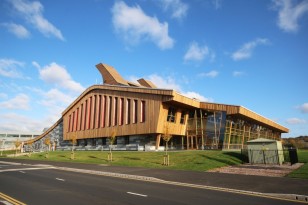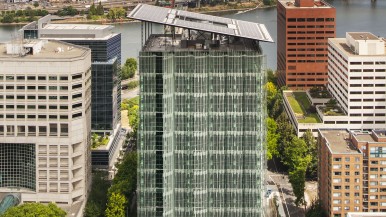
Blog / Sustainable Construction
5 remarkable sustainable architecture examples
Categories
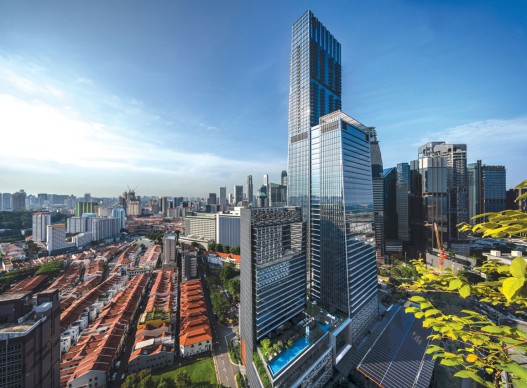
Explore these innovative sustainable architecture examples from around the world.
Each building showcases unique, eco-friendly strategies tailored to its local environment and cultural context.
Let's embark on a global tour of sustainable design!
1. The Edge - Amsterdam, Netherlands
Designed by PLP Architecture and completed in 2014, The Edge in Amsterdam is often hailed as one of the greenest office buildings in the world. This sustainable architecture example uses advanced technology and thoughtful design to minimise environmental impact.
- Energy Efficiency: Achieves approximately 70% energy savings compared to typical office buildings.
- BREEAM Score: Holds the highest BREEAM rating ever awarded, with a score of 98.36%.
- Solar Power: Equipped with 4,100 square metres of rooftop solar panels.
- Rainwater Harvesting: Systems installed for flushing toilets and watering plants.
- Intelligent Lighting: LED lighting system that adjusts based on occupancy and natural light levels.
- Thermal Energy Storage: Uses an aquifer thermal energy storage system to heat and cool the building.
2. Eastgate Centre - Harare, Zimbabwe
Designed by Mick Pearce in collaboration with Arup engineers and completed in 1996, the Eastgate Centre is a prime example of biomimicry in architecture. This sustainable architecture example harnesses natural solutions to human challenges by mimicking the self-cooling mounds of African termites.
- Natural Ventilation: The building uses a natural cooling system that eliminates the need for air conditioning.
- Thermal Mass: The building's mass absorbs heat during the day and releases it at night.
- Energy Consumption: Consumes less than 10% of the energy of a conventional building of its size.
- Material Use: Constructed from locally sourced materials to reduce the environmental impact.
- Maintenance Savings: Saves 3.5 million US dollars in air conditioning costs.
3. Tanjong Pagar Centre - Singapore
Completed in 2016 and designed by Skidmore, Owings & Merrill, Tanjong Pagar Centre is Singapore’s tallest building and a standout sustainable architecture example in Asia. It integrates multiple green strategies to ensure sustainability and efficiency.
- Vertical Greening: Features extensive vertical green spaces to reduce urban heat island effect.
- Water Efficiency: Has a rainwater harvesting system and water-efficient fixtures.
- Energy Star Rating: Received a Platinum rating under the BCA Green Mark scheme.
- Waste Reduction: Implements extensive recycling and composting programs.
- High-Performance Glazing: Reduces solar heat gain while maximising natural daylight.
- Smart Building Systems: Incorporates an integrated building management system that optimises energy use.
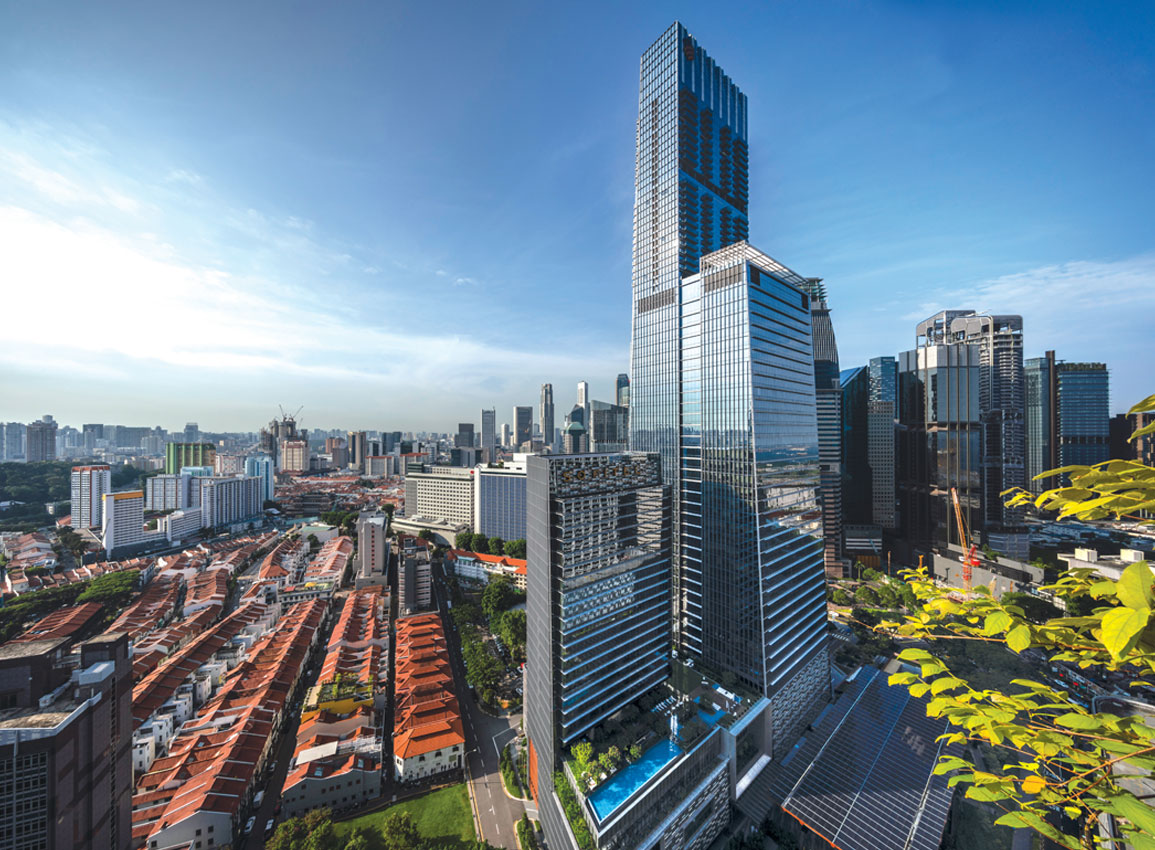
4. Brock Environmental Center - Virginia Beach, USA
Designed by SmithGroupJJR and opened in 2014, the Brock Environmental Center stands as a model for sustainable architecture in North America. It emphasises resilience and minimal environmental footprint.
- Zero Net Energy: Produces more energy than it consumes annually.
- LEED Platinum Certification: Meets the highest standards of the Leadership in Energy and Environmental Design.
- Rainwater Treatment: Uses rainwater for all water needs, including drinking.
- Material Reuse: Over 80% of materials sourced from salvaged or recycled sources.
- Wind Turbines: Two onsite turbines contribute to the building’s energy supply.
- Living Building Challenge: Meets stringent requirements of the Living Building Challenge.
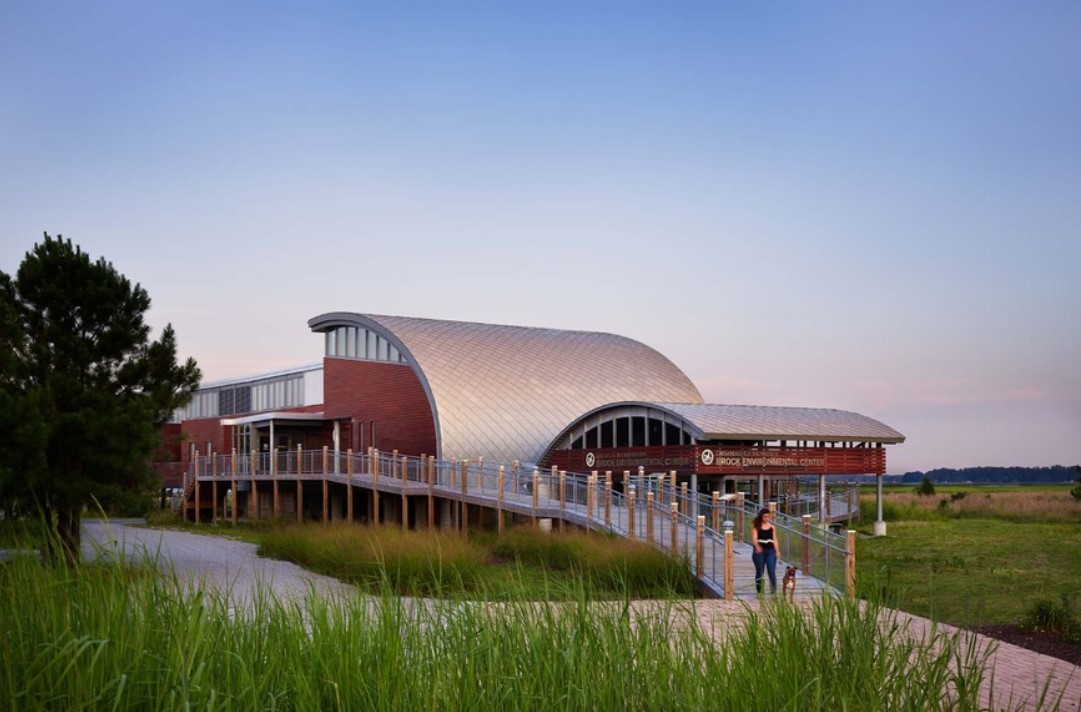
5. Earthship Biotecture, Taos, New Mexico, USA
Earthships are self-sufficient homes built from natural and recycled materials. They are designed to be off-the-grid, using solar and wind power, and are equipped with systems for water harvesting and food production.
- Solar Energy: Solar panels provide the primary energy source.
- Insulation: Thermal mass from recycled materials like tires ensures stable indoor temperatures.
- Energy Management: Passive solar design and energy-efficient appliances minimize energy use.
- Sustainable Materials: Recycled materials such as tires, bottles, and cans are key building components.
- Water Conservation: Rainwater harvesting and greywater recycling systems reduce water usage.
- Food Production: Indoor and outdoor gardens support food self-sufficiency.
Each of these sustainable architecture examples provides a unique insight into how architects and engineers around the world are innovating to create solutions that offer both functionality and environmental stewardship.
Build a better future with our sustainable architecture course
If you’d like to master the design of Zero-Impact Buildings (ZIB) through advanced energy simulations and innovative circular economy solutions, our sustainable architecture course is for you. In it, you'll gain skills to create efficient structures that significantly reduce the construction sector's carbon footprint.

